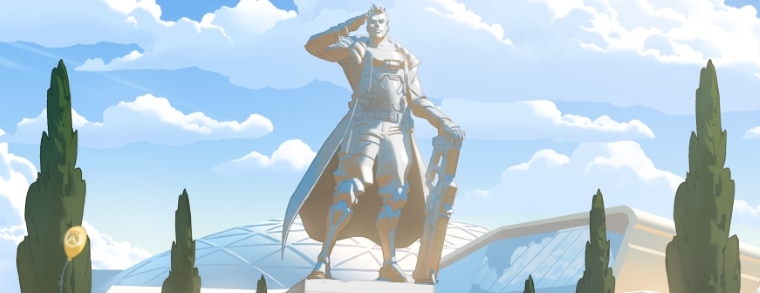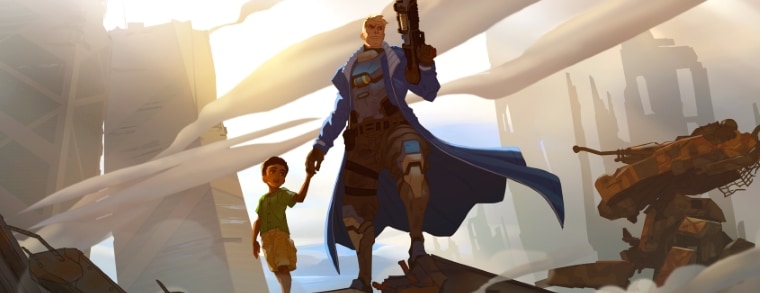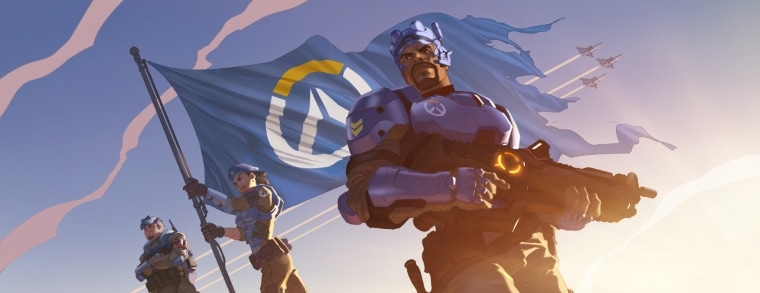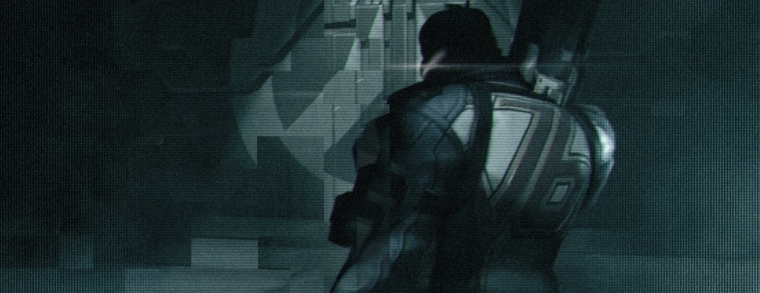
I remember the day Jack Morrison died. It was the day the world lost a hero.
Like other members of the so-called "Overwatch Generation," I spent my childhood looking up to Morrison. He taught me that heroes were real. He made me believe that even I could be one. When he died under mysterious circumstances six years ago, I felt as if a part of my childhood died with him.
The details about his death have always remained few and far between, a strange fact, given that he was such a public figure. Maybe that's why after all this time, I find myself looking back at Morrison's life and asking the big question: what really happened to the man who defined my generation?
Traveling through rural Indiana, I find it easy to forget that a monumental figure like Jack Morrison came from such a tranquil, time-lost place. A sea of green and gold cornstalks stretches from horizon to horizon. There is no wind, no sound save the buzz of a few lonely insects. On the rare occasions when I cross paths with other living souls, they describe young Morrison in different ways. He was a rambunctious youth. A humble, salt-of-the-earth farmer's son. But these people all agree on one thing: Morrison was never destined to live out his days in the land of rolling plains and deep blue skies.
At eighteen, Morrison packed his bags and joined the military. He had planned to serve a brief stint in the armed forces and then return home to the family farm, but his work ethic and courage caught the eye of the military brass. Before long, he earned a coveted position in the government's controversial and still-classified (but widely acknowledged) "soldier enhancement program." Military scientists shaped Morrison and other inductees into the perfect soldiers, blessed with superhuman speed, strength, and agility.
Morrison and his fellow augmented soldiers would soon put their abilities to use with the advent of the Omnic Crisis. Across the globe, the omniums went rogue and churned out legions of militarized robots. The world reeled at the appearance of this new enemy. The omniums and their robot populations had originally been built to bolster manufacturing and create economic equality worldwide. Now, these marvels of modern science sought to overthrow the human race, posing one of the greatest threats to the survival of our species since the Cold War of the 20th century.
"Even I had my doubts about whether Overwatch would succeed, but Morrison never gave up hope. He didn't just meet our expectations for what Overwatch and its agents could achieve; he shattered them."
As governments tried and failed to neutralize the machines, the United Nations was busy forming an international task force called Overwatch. This small, experimental group would bring together the best and brightest from around the world to wage asymmetrical warfare against the robots. Overwatch's short list of prospective agents included two members of the soldier enhancement program: Morrison and Gabriel Reyes, a senior officer. Reyes, a hardened and highly respected veteran, grew up about as far from rustic Indiana as you could get—the sprawling urban melting pot of Los Angeles. Despite their differences, the two soldiers became friends. Their decision to join Overwatch together would change the world, for good and for bad.
Leadership of Overwatch fell to Reyes, but Morrison would have a greater impact on the group in the long term. He brought out the best in the people around him and helped mold Overwatch's diverse (and sometimes conflicting) agents into a cohesive fighting force. In unity, they found the strength to defeat the robots and end the Omnic Crisis.
"Even I had my doubts about whether Overwatch would succeed," UN Under-Secretary-General Gabrielle Adawe, one of Overwatch's key architects, said shortly after the end of the Omnic Crisis. "But Morrison never gave up hope. He didn't just meet our expectations for what Overwatch and its agents could achieve; he shattered them."
The UN rewarded Morrison for his contributions by making him Overwatch's first official commander. Reyes was passed over in the process, and it created a rift between the two men that would lead to tragic consequences.
After the Omnic Crisis, Overwatch experienced a meteoric rise in prominence. New funding and resources gave the now-public organization far-reaching global influence. The world celebrated Overwatch's agents as heroes, but none more so than Morrison. He became the face of Overwatch, a symbol of hope and promise, from the cobblestone streets of King's Row to the sweltering night markets of Bangkok.
Strike Commander Morrison envisioned a bright new future for humanity. Under his leadership, Overwatch served as a global peacekeeping force and an engine for innovation, making advances in scientific fields as varied as space exploration and medical research. But even as Overwatch grew in power, Morrison stayed dedicated to the people around him. He trained new agents, instilling in them Overwatch's noble goals and ideals. At Morrison's memorial service, Reinhardt Wilhelm, one of the group's original members, said, "He devoted everything he was to Overwatch. He was our moral compass. Our inspiration. Our friend."
Morrison and his peers ushered in an unprecedented era of peace and prosperity, but it was not to last. Two decades after Overwatch ended the Omnic Crisis and saved humanity, it was brought to its knees by a series of shocking allegations: negligence resulting in high-profile mission failures; corruption and mismanagement; weapons proliferation; human rights abuses; and more.
A special UN committee launched a lengthy and highly secretive investigation into the claims. This inquiry would lead to the dismantling of Overwatch, and its once-beloved agents would become objects of derision and suspicion in the media. But before all of that could happen, another tragedy would rock Overwatch and serve as the troubled organization's death rattle.
As the UN investigation proceeded, Overwatch's Swiss headquarters was destroyed in an apparent accident. Among the casualties were Morrison and Reyes. The UN has steadfastly maintained that there was no foul play behind this event. However, an anonymous source has given me access to classified UN debriefings and other data that paint a different picture of Overwatch's final days.
"After Morrison's promotion to strike commander, his relationship with Reyes changed. The tension became more pronounced as time went on. I tried to mend things. We all did. Sometimes when the closest bonds break, all you can do is pray you stay out of the cross fire."
These records indicate that a rebellion tore the group apart from within. On one side was Morrison, determined to hold together what remained of Overwatch. On the other side was Reyes, whose agenda remains unknown to this day. A battle raged between these men deep within Overwatch's base. At some point, their fighting triggered an explosion that destroyed the facility and sent the dreams of an entire generation up in flames.
According to Overwatch's former agents, this outcome was inevitable. "After Morrison's promotion to strike commander, his relationship with Reyes changed," Dr. Angela Ziegler, medical director of Overwatch, stated during a UN committee hearing. "The tension became more pronounced as time went on. I tried to mend things. We all did. Sometimes when the closest bonds break, all you can do is pray you stay out of the cross fire."
The UN data goes on to disclose something even more disturbing: Morrison's body was never recovered.
This revelation could explain a recent string of high-profile robberies and attacks that have dominated the news. A masked vigilante whom authorities have named "Soldier: 76" is considered the prime suspect in these incidents. In addition to bombing corporate offices and financial institutions in the United States, this individual has breached a number of former Overwatch bases. Soldier: 76 has stolen valuable technologies from these sites, including experimental weaponry, causing untold damages in the process.
I've heard my share of theories that Soldier: 76 is Jack Morrison—theories I once would have discounted as fiction. But based on everything I've seen, I now believe these claims are true.
UN officials have declined to comment on Soldier: 76's identity. However, security personnel who were present at the former Overwatch base break-ins described the attacker as someone well versed in covert ops tactics. Surveillance footage of Soldier: 76 shows him performing superhuman feats of strength and endurance. At my request, noted forensic expert Amir Nejad, PhD, analyzed this footage. He determined that Soldier: 76 is precisely the same height and build that Morrison was in his last public appearance.
If Soldier: 76 is indeed Morrison, what is he doing, and why?
The veracity of the allegations leveled against Overwatch years ago remains a point of contention. Some historians and political pundits have questioned the motivations of those who first made the corruption charges against the group. Is Soldier: 76 on a mission to avenge the fall of Overwatch and restore its name? Is he trying to uncover a vast conspiracy that discredited and destroyed Overwatch? Or is he simply a bitter old soldier, clinging to lost glory and fighting a phantom war that he believes is still raging?
Even I, a child of the Overwatch Generation, know that the more altruistic of these scenarios are the stuff of fantasy. Soldier: 76's reckless activities, his willingness to put the lives of innocents at risk, prove that he is not driven by noble intentions. He is just a man acting in his own interests, another villain in league with the despots and international crime lords who terrorize our communities on a daily basis.
Standing before Jack Morrison's grave in Arlington National Cemetery, I'm reminded of rural Indiana's quiet serenity. Like the sea of cornstalks, neat rows of ivory tombstones seem to go on forever in all directions.
In this place of reflection and bittersweet remembrance, I realize all the more that Soldier: 76 is not the Jack Morrison I knew from my childhood. The Morrison I knew wouldn't hide behind a mask. He wouldn't plant bombs and steal weapons while the world suffered through another year of war and heartache.
That Morrison was buried here six years ago. All that's left is the shadow of the hero we once knew.



